Wingnut Wings' 1/32 scale
FE2.b (Early)
by Leo Stevenson
|
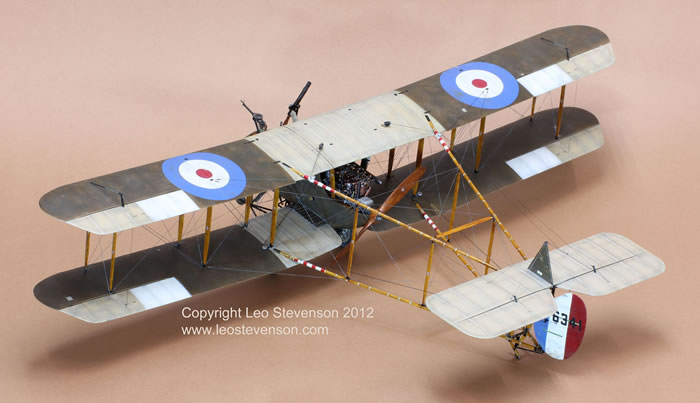
|
FE2.b (Early) |

HyperScale is proudly supported by Squadron.com
Wingnut Wings FE2.b (Early) is a fabulous kit that speaks for itself, so I'll just add some notes on my tweaking of it to give it a boost and my own ‘spin’.
I added various extra details such as sprung clips for the front swivelling Lewis gun mount, stainless steel tube to replace the plastic tube for the mysterious tube (second gun mount?) on the right of the gunners cockpit seen on period photos, and of course lots of weathering to resemble both the state of this particular captured aircraft (6341) was in and, subconsciously, also my Zafira outside in front of my house (!).
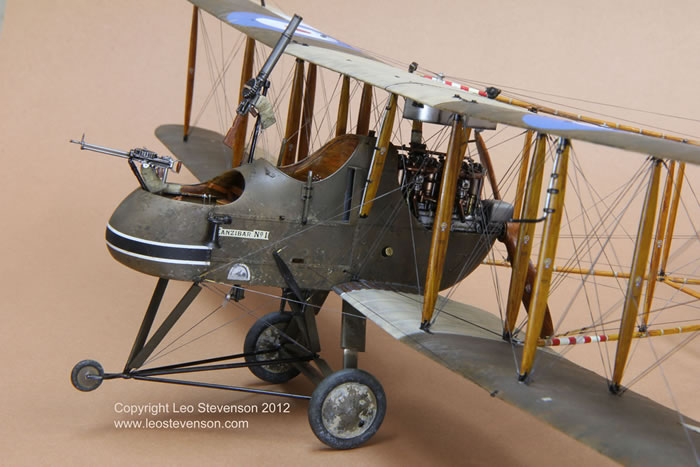
I nailed it all together using fairly conventional methods, and it was painted mostly using home-mixed shades based on both Tamiya and Xtracrylix paints, and before that with a lot of pre-shading with dabs of very dark brown and white applied with a piece of torn sponge etc, and Alclad paints for the metal[ised] parts.
For the rigging I used ‘Bob’s Buckles’ turnbuckles (highly recommended!) and ‘EZ line’ and that elasticated ‘RAF flat rigging line’, both of which are a departure from my usual fine black nylon ‘repair thread’ that I usually use for rigging WW1 models.
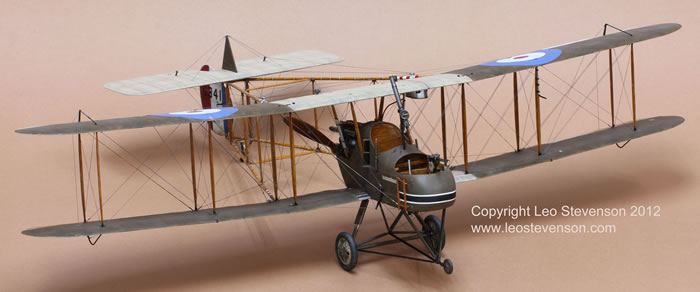
EZ line (which is used for what on a ship would be called ‘running rigging’) takes a bit of getting used to, but apart from the lovely realistic tautness you get I like the fact that it’s exactly the right colour and doesn’t need painting or matting-down, unlike nylon.
The ‘RAF flat rigging’ (used for what would be called ‘standing rigging’ on a ship) is also very good but care has to be taken not to leave twists in it when fixing it and also it needs to be painted because it’s a sort of translucent white colour naturally.
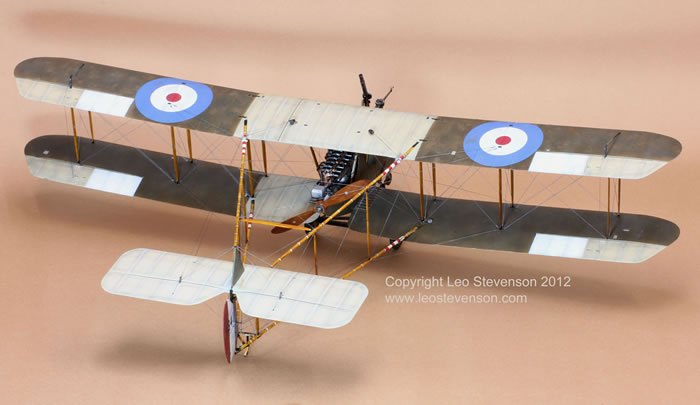
By the way, in my experience nylon still has its uses, for example when genuine strength is needed to support and brace a large model, for example in the undercarriage area, but to achieve the correct tautness this can only be done with care and warmed spatulas - and sometimes bad language. For a complex and delicate structure like the FE2.b using nylon overall would mean that the correct tautness could make it distort – or implode!
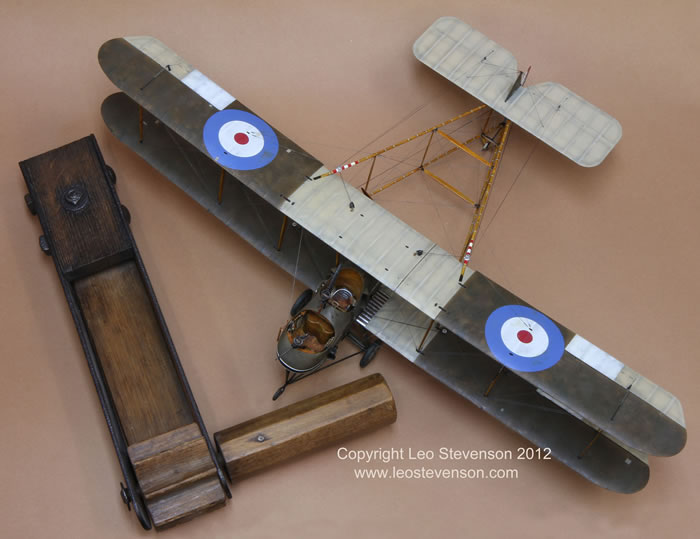
By the way, though this particular captured aircraft did not seem to have a klaxon horn on it on the photos the Germans took of it, this is such a fabulous option in this kit that that I couldn’t resist adding it. I only added the wiring to it. A man has to glue what a man has to glue.
As always with models, this is an approximation, an impression, a representation. I know I must have got some things wrong, but heck, this is my time off and I had a real blast doing this and, with the deepest respect and admiration for those who can do better and of course for those who actually flew the real thing, it doesn’t matter at the end of the day.
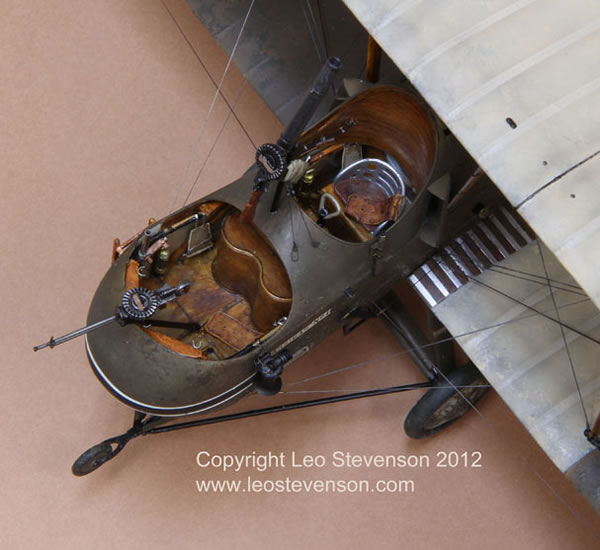
My motto is to do the best I can in the time available and enjoy it, to mentally get into that ‘zone’ of calmness and relaxing concentration that none-modellers just don’t understand, i.e. Zen and the art of modelling and all that, and don’t sweat over things that aren’t worth the effort.
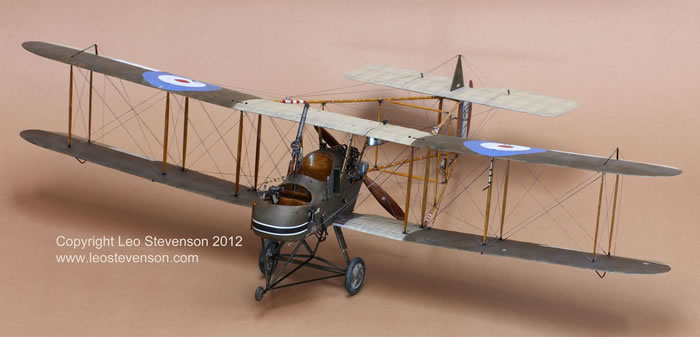
www.leostevenson.com
www.leojubilee.co.uk
Model and Text Copyright ©
2012 by Leo Stevenson
Page Created 22 November, 2012
Last Updated
22 November, 2012
Back to
HyperScale Main Page

|
Home
| What's New |
Features |
Gallery |
Reviews |
Reference |
Forum |
Search